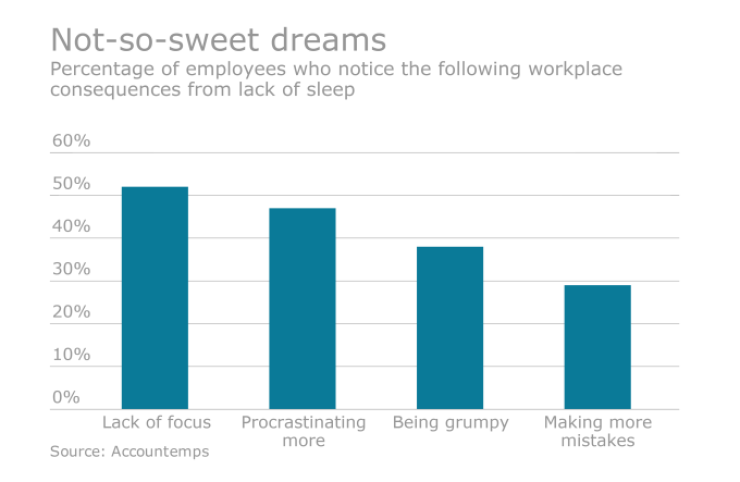In all the talk about workplace wellness programs, says one expert, employers are missing one key component: sleep.
“I think it’s terrible. I don’t think we are understanding the power of what’s being missed,” said Mary Jane Osmick, vice president and medical director for the medical services department at American Specialty Health.
Though employers spend a lot of time on health campaigns — think step challenges and “Biggest Loser”-type challenges — sleep is simply not part of the equation, Osmick said. And that needs to change.
“Sleep is imperative,” she said, speaking Thursday in Nashville at the Benefits Forum & Expo, hosted by Employee Benefit News. “We all want to be as healthy as possible, and for our employees to be as healthy as possible, but lack of sleep leads to chronic illness,” she said, citing obesity, diabetes, cardiovascular disease and even early mortality as examples.
That’s why, Osmick said, sleep should be at the “same level” as nutrition and activity on a wellness program.
“[Employers] need to identify lack of sleep with all the things you identify as risks: obesity, diabetes, high blood pressure. Put it into your assessment and find out if it’s driving part of the problem,” she said, explaining that a lack of sleep leads to weight gain.

“If you think about people who are overweight, what if [the root cause] is really sleep deprivation? And you’re beating them up to lose weight, and they are trying their darndest and are on an 800-calorie diet, … but it turns out [the problem] is that they are sleeping four hours a night?”
Adults need seven to nine hours of sleep a night to be their most productive and healthiest selves, Osmick said.
A sleep-deprived workforce, too, can lead to a host of other issues in the workforce. According to research from staffing firm Accountemps, employees cited lack of focus or being easily distracted (52%), procrastinating more (47%), being grumpy (38%) and making more mistakes (29%) among the consequences of a lack of sleep.
Safety is another concern, as drowsiness exponentially increases the risks of accidents and errors in the workplace.
So how do employers implement sleep into their wellness program?
First, Osmick said, employers need to acknowledge the problem and the extent of it within their workforce. That can be done with surveys asking about employees’ sleeping habits and patterns.
“You need to find out how much of a sleep need there is; you may find there’s a huge amount of sleep deprivation going on,” she said. “That way, you can acknowledge the problem and start to work through it.”
Next, employers must work on educational efforts and really get employees to recognize the problem. They can do this through a series of digital and consumer-evidence based materials; webinars; and group sessions. “The important thing is you have to put this information in front of employees so they understand how imperative it is,” Osmick said.
Health and sleep coaches can be brought into offices to help employees resolve their sleep issues. And of course, relaxation rooms — or even nap pods in offices — can only help, Osmick said.
The bottom line, Osmick said, is that employers “aren’t going to get people working with them in a proactive and positive way if they aren’t getting enough sleep. They have got to do something about it.”





